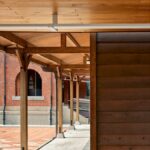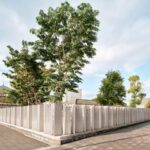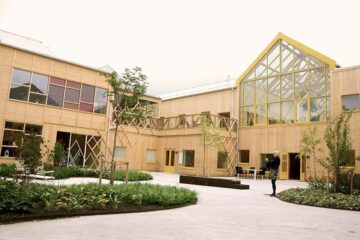Honoring Heritage: The Railway Department Park in Taiwan

Designed by XRANGE Architects, the Railway Department Park stands as a testament to Taiwan’s rich history and urban evolution. Situated within the National Taiwan Museum, this park spans 17,000 m² of land that has witnessed over a century of transformation.

A Historical Landmark
The site of the Railway Department Park holds significant historical importance, dating back 130 years to the Qing Dynasty. Initially serving as the location for the Machinery Bureau, which manufactured weapons, it later transitioned to become the Taipei Artillery Factory and eventually the Taipei Railway Factory in 1900. Today, the park sits adjacent to the bustling Taipei Main Station, serving as a green oasis amidst the urban landscape.

Revitalizing the Past
The Railway Department Park is an integral component of the Taipei West District Gateway Project, a comprehensive urban renewal initiative aimed at revitalizing downtown Taipei. As part of this project, XRANGE Architects sought to honor the site’s storied past while creating a space that resonates with contemporary Taipei.
Unveiling Urban Traces
The design concept for the park, titled “Landscape of Traces,” celebrates the site’s diverse history by revealing historical imprints and urban traces to the public. Rather than attempting to recreate the past through archaeological reconstruction, the design team opted to represent past transformations through blurred, lo-fi imprints scattered throughout the museum grounds.

Blurred Boundaries
The landscape design language employed by XRANGE Architects embraces the concept of approximation, acknowledging the limitations of historical accuracy. Traces of past buildings, structures, and railway tracks are depicted with blurred edges, symbolizing the fluidity of urban growth and transformation over the years.

A Living Tribute
The Railway Department Park serves as a living tribute to Taiwan’s industrial heritage and urban development. By preserving and interpreting the site’s historical significance, XRANGE Architects has created a dynamic public space that invites visitors to explore the layers of history embedded within its grounds.






























